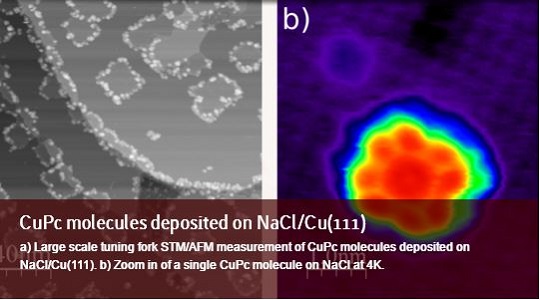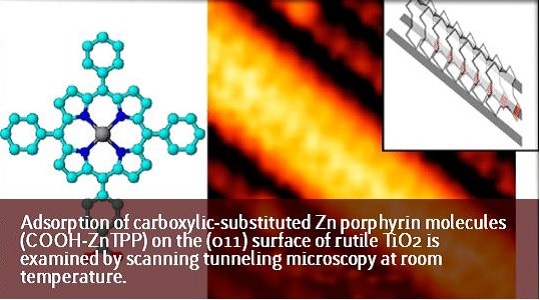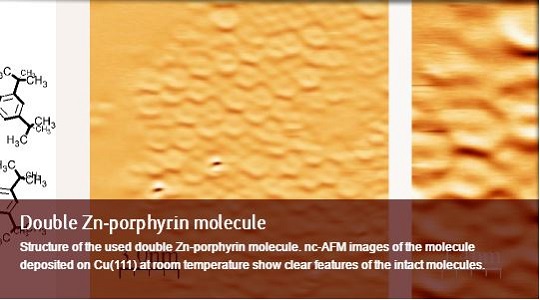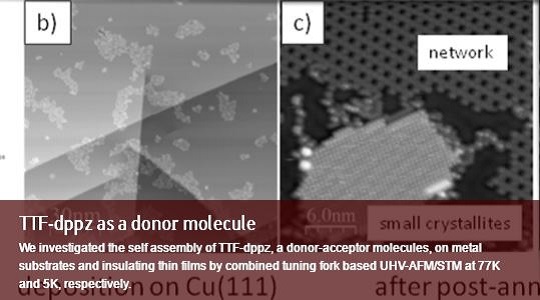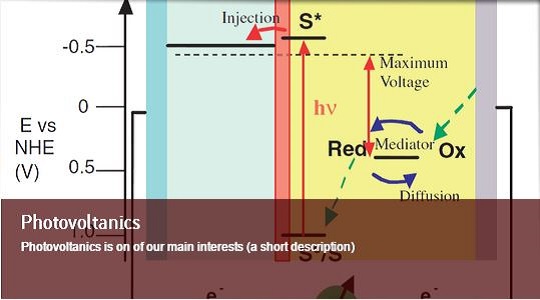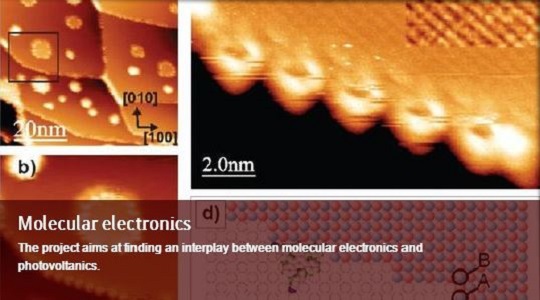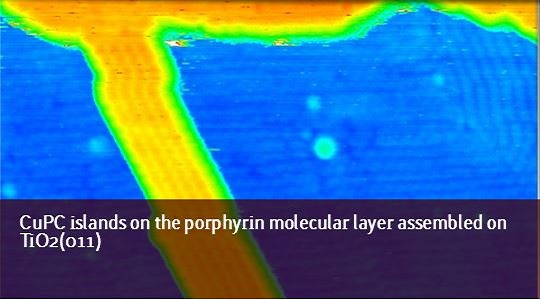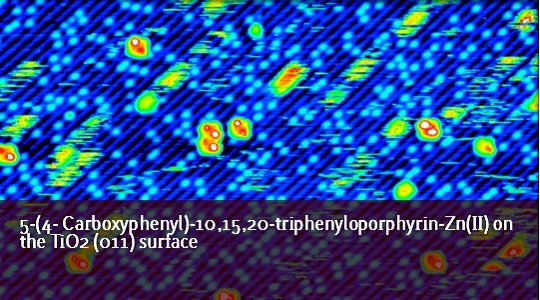Bartosz Such Adsorption of carboxyphenyl-substituted Zn porphyrine molecules on TiO2(011). The conference abstract below
Abstract
In the presentation the adsorption and organization of 5-(4-Carboxyphenyl)-10,15,20-triphenylporphyrin-Zn(II) molecules on TiO(011) surface will be described based on the results of scanning tunneling microscope (STM) investigations performed in ultra-high vacuum (UHV). At the coverage below 0.1 monolayer the majority of the molecules are immobilized on the terrace edges and surface defects. While the coverage grows the molecules form linear structure along [01-1] direction, corresponding to the direction of oxygen rows on the (2x1) reconstructed TiO2(011) surface. The molecules remain quite mobile until a full monolayer is formed. The molecules are than adsorbed on the every second reconstruction row thanks to the interaction of the carboxyl groups with the Ti atoms at the surface while their linear assemblies are stabilized by the intermolecular interactions. In contrast to some earlier results it is clear that the molecular board of the porphyrines is far from being perpendicular to the substrate which can have a huge impact on the molecule performance as a sensitizer in a dye-sensitized solar cell.
Res Jöhr, Antoine Hinaut, Rémy Pawlak, Ernst Meyer, Thilo Glatzel, Investigation of adsorption geometries of single Cu-TCPP on rutile TiO2 (110)
Abstract
Molecular adsorbates on surfaces play a major role in many new emerging technologies like hybrid photovoltaics or catalysis. For these applications the adsorption geometry of the molecule is crucial since it influences the electronic properties at the interface, which in turn determines the performance of devices. In many applications like e.g. dye-sensitized solar cells titanium dioxide is widely used as substrate. Hence, the rutile TiO2 (110) structure of titania has become a model system. Due to their tuneability, porphyrins and phthalocyanines are often used as adsorbates. In this study we investigate the adsorption geometry of single copper porphyrins (Cu-TCPP) on rutile TiO2 (110) in UHV. In order to determine the adsorption sites and configuration, we applied non-contact atomic force microscopy (nc-AFM) and Kelvin probe force microscopy (KPFM) as well as scanning tunnelling microscopy (STM) at low temperature. Different adsorption geometries have been observed with nc-AFM. We find that the molecules lie flat on the surface and do not necessarily bind covalently to the surface. The adsorption geometries were further confirmed by high resolution STM. KPFM measurements reveal a work function difference between the adsorbates and the bare substrate. Particularly we observe that heat treatment of the covered surface leads to a strongly, most probably covalently, bound molecule.

